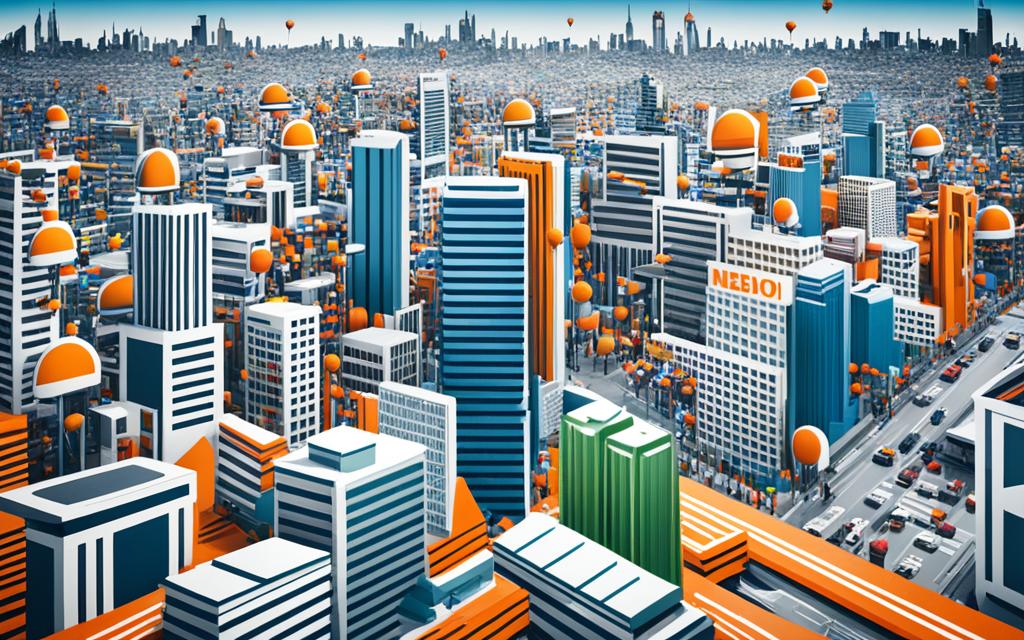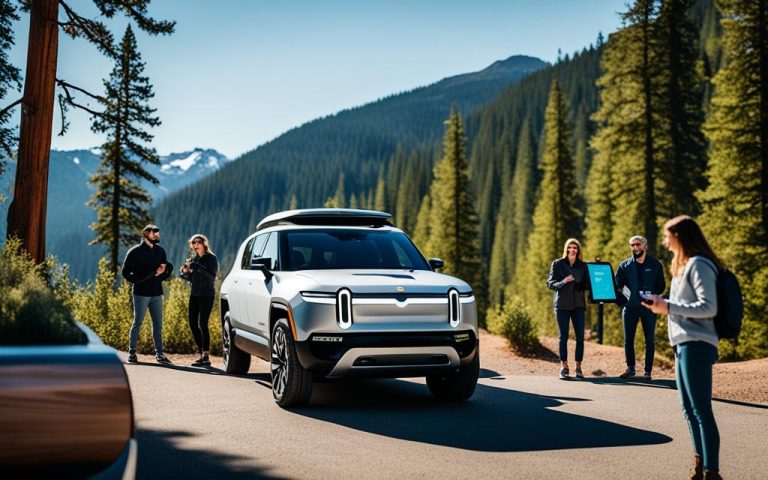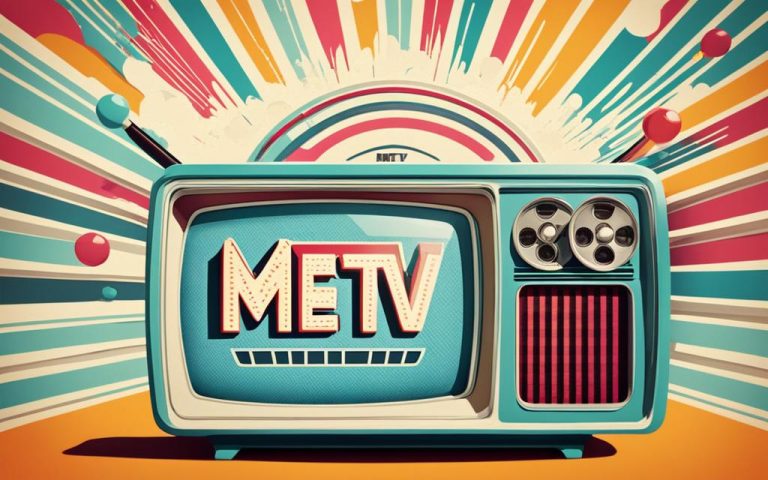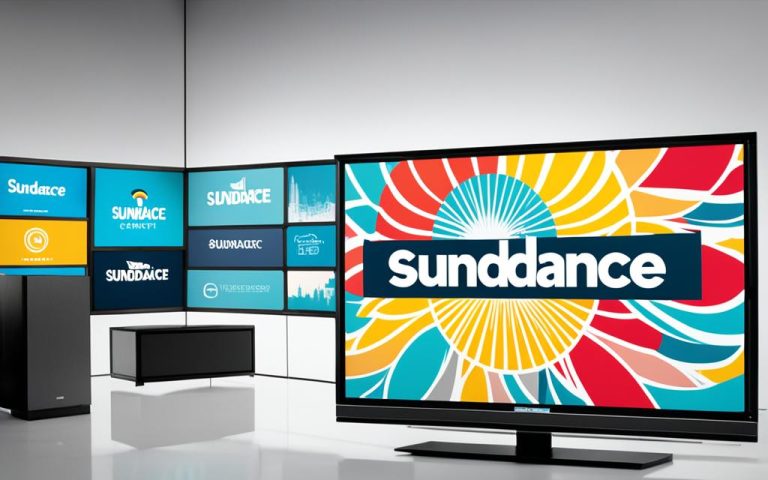A local station that broadcasts a national network is key to our community’s life. It’s a main source of news, fun, and info for locals. By airing national shows, it lets viewers enjoy a mix of hits, sports, and news.
This station does more than just share shows; it boosts the local economy by creating jobs. Big networks like CBS and NBC send their shows to local stations across the U.S1.. This teamwork ensures viewers get top-notch shows and stay in the loop with national events.
Local stations affect how people of all ages watch TV. Millennials (21–37) often get news from social media like YouTube and Twitter1. Baby Boomers (54–72) prefer TV, whether it’s national or local news1. This shows how vital local stations are for news and info for everyone.
Local stations also help spread cable networks. Cable networks send shows straight to local cable hubs without needing local affiliates. This has changed TV watching, giving us more channels and the chance to watch shows when we want1.
CNN was the first to bring us 24-hour news with live coverage and interviews1. This changed how we get news, keeping us updated anytime. Cable and satellite providers now offer shows on-demand, letting us watch what we like without waiting1.
Online news has opened doors for new media outlets. These platforms share news from different views and reach more people. But, the ease of online news has also brought more low-quality content1. It’s important to check the sources of online news carefully.
In summary, local stations that broadcast national networks are crucial. They connect our communities to the world, offer a variety of content, and shape public opinion with news and info1.
Key Takeaways:
- Local stations broadcasting a national network are essential for connecting communities to the wider world.
- Television networks like CBS and NBC distribute their programs to local stations, ensuring viewers receive high-quality content.
- Different age groups have different preferences for news sources, with Millennials relying more on social media and Baby Boomers preferring television.
- Cable networks operate without local affiliates, providing viewers with a wide range of channels and on-demand options.
- The rise of online publication has allowed niche media outlets to emerge, but it has also increased the presence of poorly written content.
The Media Landscape: Print, Television, and Internet
The media landscape has changed a lot over time. It now includes print media, television, and the internet. These platforms have changed to fit new technologies and what people like. They now shape how we get and use information.
Print media has been key in the media world for a long time. In 2012, it made $46 billion from ads. But by 2020, that number dropped to $20.5 billion, showing a big change2. Newspapers used to be the main news source but now face challenges from free online blogs2. They’ve adapted by being in both print and online, meeting readers’ new needs2. The 19th century saw new machines making newspapers cheaper and more widespread, leading to more newspapers and wider coverage2.
Television has greatly changed society, with local stations showing national shows. Public media like NPR and PBS reach millions, offering great educational and cultural shows3. But commercial TV has been criticized for lacking educational shows, especially for young kids3. The Public Broadcasting Act of 1967 helped start public broadcasting, aiming for better quality shows3. This push for better content tries to beat commercial TV3.
The internet has changed the media world a lot, shaking up old ways. In 2010, many people had magazine subscriptions and most U.S. homes got a daily newspaper4. The internet made information much more available and easy to get. A study found U.S. homes used about 3.6 zettabytes of information in 2008, a huge jump from 19804. Now, people look for news online and want it fast and from many sources. This has changed how print media makes money and how many people read it2.
The media landscape keeps changing with new tech, what people want, and competition. Print, television, and the internet have changed how we get, use, and share information. This has made the modern media world diverse and interesting.
| Media Format | Advertising Revenue (2012) | Advertising Revenue (2020) |
|---|---|---|
| Print Media | $46 billion | $20.5 billion |
The Functions of the Media: Informing and Entertaining
The media plays a key role in our society. It informs and entertains us. It shares news and updates, keeping us in the loop on important events and issues.
Nowadays, young people get their news from social media like Instagram, TikTok, Twitter, and YouTube5. Older folks still prefer TV for news, watching national and local channels5.
TV networks like CBS and NBC share programs with local stations across the US. This offers a broad range of news5.
Cable networks like CNN, MSNBC, and FOX News focus on specific news and programs. They cater to different viewer interests5.
Thanks to cable and satellite providers, viewers can watch shows on their own time. This flexibility lets them enjoy content without a set schedule5.
Online media, such as Politico.com and the New York Times website, offer in-depth news on various topics5.
Online, it’s easy to start niche media outlets. This allows for specialized coverage in certain areas of interest5.
The Internet speeds up news sharing, offering real-time updates. But, it also brings challenges, like the risk of errors from the push for quick news5.
Social media platforms like Facebook and Twitter have changed how we communicate. They let us share information instantly, broadening the media’s reach5.
The media informs us, acting as a watchdog. It highlights important issues, promotes transparency, and uncovers corruption. By doing so, it empowers us to make informed choices.
But the media is also a source of entertainment. It offers a wide range of shows, from dramas to reality TV. This lets people relax and enjoy their free time.
As technology advances, the media keeps evolving. It adopts new formats and reaches more people. Its roles in informing and entertaining us are crucial in today’s society.
Freedom of the Press and Government Regulation
Freedom of the press is key in a democracy. It lets journalists share info so people can make smart choices. But, this freedom can be limited by government rules to keep things fair and safe6.
The Federal Communications Commission (FCC) is in charge of TV and radio in the U.S. It has five Commissioners picked by the President and confirmed by the Senate. They work to stop stations from interfering with each other and focus on what’s best for everyone7.
The FCC also puts out Notice of Proposed Rule Making (NPRM) documents. These suggest new rules and set deadlines for public feedback. People can share their thoughts on these rules by following the FCC’s website7.
The press has a lot of freedom but must be careful. They should avoid spreading lies or sensitive info that could hurt national security or privacy.
To keep the public’s trust, stations must follow rules about what they can air. They can’t show indecent content when kids might watch. They also have to give political candidates equal time to speak, making sure everyone gets a fair chance during elections6.
As media changes, so does how it covers politics. Now, the media analyzes political events more than just reporting them. Candidates’ messages have gotten shorter, making quick, to-the-point messages more common in campaigns6.
The media is key in keeping the government in check. But, it focuses more on what the president does than on policies. This means the media has a bigger impact on the president than on Congress6.
Media ownership is also a big deal. In the U.S., a few companies own a lot of local TV stations. For example, Sinclair reaches almost 40% of Americans. This is true for TV, radio, and newspapers too8.
| Statistical Data | Source |
|---|---|
| The FCC has five Commissioners appointed by the President and confirmed by the Senate. | 7 |
| The FCC releases Notice of Proposed Rule Making (NPRM) documents to propose new rules or changes, setting deadlines for public comments. | 7 |
| Five national companies own nearly forty percent of all local TV stations. | 8 |
Media Bias and its Impact
Media bias has always been a focus of study and debate9. It may not directly change our views, but it shapes how we see the world. Media uses framing to present stories, which affects how we view race, class, and more9.
Today, media focuses more on analysis than news, especially in election coverage9. Sound bites have gotten shorter, from 42.3 seconds in 1968 to just eight seconds in 20049. This change leads to more focus on campaign strategies than policy details9.
Media coverage of politicians can be biased. A study found MSNBC had 71 out of 74 stories on Mitt Romney in 2012 were negative9. FOX News had 46 out of 52 stories on Obama with a negative tone9. This bias can affect how people vote9.
Media bias varies by country and is influenced by many factors10. Practical limits and the need to tell stories can lead to bias10. In some places, government control makes bias worse10. Countries like China and North Korea have government-influenced media10.
Media and politics can influence each other10. Ownership of media can also introduce bias by focusing on what audiences like10. Learning about bias is key in media education and journalism studies10.
There are many types of media bias, including advertising and partisan bias10. These biases can change how people see news10.
Media ownership affects bias too. Stations owned by the same company cover local news more than others11. This shows how ownership can shape news coverage11.
In conclusion, media bias greatly impacts public opinion and how we see the world9. Framing, sound bites, and biased coverage shape our views and voting9. Bias varies by country and is influenced by many factors10. Knowing about bias helps us understand news better10. The way media is owned also affects bias, with more local coverage in cross-owned stations11. Stay informed, question news framing, and be aware of media biases.
Different Media Formats and Audiences
Technology and media have changed a lot, bringing new ways to share information. Each type of media has its own style and way of reaching people. Knowing what different groups like is key for media to share news well and connect with viewers.
Nowadays, how people get their news is changing with the generations. Young people, like Millennials and Generation Z, often get news from social media sites like Instagram, TikTok, and Twitter12. These sites are their main sources of news, shaping their views and choices.
But, older folks still watch a lot of TV for news, especially Baby Boomers12. TV has many types of shows, from dramas to reality shows and news, catering to many tastes.
Cable and satellite TV help bring TV to more people locally13. Cable doesn’t need local stations, so it can reach all over the country12. This lets cable networks reach more people, making their shows more popular.
The internet has changed how news spreads, making it fast and wide-reaching. But, it also means more bad news online, so we must be careful what we read12. With so much information online, it’s important to check facts to know what’s true.
In the U.S., big companies like CBS, Comcast, and Disney own many TV channels and media outlets12. This can affect how diverse media is and what views get shared, making us wonder about their power.
Media companies need to understand their audience well. By knowing what different groups like, they can share news in ways that reach and engage people. This helps everyone stay informed and well-rounded.
| Media Format | Audience Reach |
|---|---|
| Social Media Platforms | Mainly Millennials and Generation Z |
| Television | Wide-ranging, but Baby Boomers remain avid viewers |
| Cable and Satellite TV | Nationally distributed, reaching a diverse range of viewers |
| Internet | Offers rapid information dissemination but requires caution |
| Media Conglomerates | Control vast television networks and media outlets |
Source: Social Sciences – LibreTexts and Wikipedia
Economic Impact of Local Broadcasting
Local commercial broadcast TV and radio have a big economic impact on the American economy. They create over $1.23 trillion of Gross Domestic Product (GDP) and support 2.52 million jobs14. This shows how important local broadcasting is for economic growth and jobs.
Local broadcasting also helps other industries, adding nearly $139 billion in GDP and over 784,000 jobs14. This shows how different sectors work together and benefit from local broadcasting.
Broadcast TV and radio create a lot of jobs and add to the economy. TV supports over 193,000 jobs and more than $34 billion in GDP. Radio adds 121,000 jobs and over $21 billion in GDP14.
Local TV and radio ads are key to economic growth. They generate $1.03 billion in GDP and support 1.42 million jobs14. This shows how important ads are for the broadcasting industry.
Overall, the broadcasting industry has a big impact on the economy. It adds more than $630 billion in GDP and 875,000 jobs from TV. Radio adds nearly $400 billion in GDP and over 540,000 jobs14.
The Future of Local Broadcasting
As technology changes and what people want evolves, local broadcasting will keep changing too. The rise of digital platforms and streaming services brings new challenges and chances for the industry. Broadcasters need to adapt and find new ways to stay relevant in the digital age.
Table 1 shows the big difference in market size between major tech companies and local TV groups15. This data highlights the need for local broadcasters to find new ways to compete in a digital world.
Tables 2 and 3 show how much money social media giants like Facebook and Google make from broadcaster content15. This data shows the financial impact on broadcasters and the importance of partnerships and sharing revenue.
Table 4 looks at the potential extra revenue broadcasters could make if Google’s algorithms better valued local news15. This data points out a missed chance for broadcasters and the need for better search engine optimization.
Tables 5 and 6 give insights into how revenue is shared between Google, Facebook, and broadcasters15. These tables show the economic ties between tech giants and broadcasters.
While immediate effects from partnerships with Apple and Amazon might be small, Tables 7 and 8 show the potential future impact15. These tables highlight the changing dynamics between broadcasters and tech companies.
The Changing Landscape of Television Advertising
Statistical data16 also sheds light on TV advertising revenue. In 2005, English language networks made $14.7 billion from ads, showing the big market size16. Spanish language networks saw a slight drop from their peak in 2007, but there’s still room for growth.
The Olympics in 2000 brought in $785 million in extra ad revenue, showing the power of big events16. Political ads on local TV stations are much higher in even years, especially during presidential elections16. This data shows how different types of ads affect the economy.
Broadcasters’ retransmission rights revenues are expected to grow from $762 million in 2009 to over $2.6 billion in 201616. New technology lets broadcasters send more video streams, offering more chances for ads and revenue16.
Despite challenges, the forecast suggests broadcast TV ad revenues will bounce back to their peak in the next five years, with political ads playing a big part16.
| Year | Advertising Revenues (in billions) | |
|---|---|---|
| English language national broadcast networks | 2005 | $14.7 |
| Spanish language national broadcast networks | 2007 | Decline from peak |
| Olympics incremental ad revenues | 2000 | $785 million |
| Non-political advertising revenues of local broadcast television stations | 2007 | About $17.8 billion |
| Political advertising revenues of local broadcast television stations | Quadrennial presidential election years | Significantly higher |
| Broadcasters’ retransmission rights revenues | 2009 – 2016 | $762 million to over $2.6 billion |
The way people engage with media and the relationship between broadcasters and tech giants are changing. By using technology and partnerships, local broadcasting can keep having a big economic impact and adapt to the changing media landscape.
Advertising and Economic Stimulus
Local broadcasting does more than just share news and fun. It’s a big part of advertising, helping the economy grow. For example, ads on local TV and radio help create $1.03 billion in GDP and support 1.42 million jobs17.
Advertisers use broadcast TV and radio to reach lots of people. They promote products and services through local stations. This helps increase sales and boosts the economy.
Local stations give out important info that helps people decide what to buy. They share about different products and local shops. This info helps the economy grow and makes money for advertisers and businesses.
Local broadcasting is key for a strong market. Data shows that ads help newspapers stay afloat18. But, less ad money has hurt their business, making them struggle.
Using local broadcasting, advertisers can get their message out there. This helps them reach the right people and grow their business. This partnership between ads and local broadcasting boosts the economy and helps news groups survive.
In short, local broadcasting boosts the economy by promoting products and services. It connects advertisers with consumers, creating a strong market. This link is crucial for growth and development.
| Impact of Local Broadcasting Advertising | Statistical Reference |
|---|---|
| Estimated GDP generated | 17 |
| Number of jobs supported | 17 |
| Role in sustaining newspapers’ economic foundation | 18 |
Conclusion
A local station that broadcasts a national network is key to our community and the media world19. It gives us news and keeps us updated on what’s happening. It also entertains us with shows that bring us closer together.
Local broadcasting also boosts the economy19. It creates jobs and helps other businesses grow. The drop in newspaper ads from 2006 to 2014 shows the tough times media faces19. Yet, local stations keep finding new ways to stay important in our digital world.
Rules from the government help guide local broadcasting20. The Corporation for Public Broadcasting and its rules make sure it’s for everyone, not just politics21. These rules also make sure board members act ethically and are accountable.
As technology changes, local stations keep playing a big part in our lives19. They offer a wide range of shows and keep our communities connected. With the right support, local broadcasting will keep informing and entertaining us for years to come19.
FAQ
What role does a local station broadcasting a national network play in our community?
A local station that broadcasts a national network is key to our community. It connects us to the world beyond our area. It’s a main source of news, entertainment, and info for locals.
What kind of content can viewers access through a local station broadcasting a national network?
Viewers get to see a lot through these stations. They can watch popular shows, live sports, and get news updates.
How does a local station broadcasting a national network contribute to the local economy?
These stations help the local economy by creating jobs and boosting economic growth.
How has the media landscape evolved over time?
The media has changed a lot. Now, it includes print, TV, and the internet.
How are national programming transmitted in today’s media landscape?
Thanks to new tech, national shows can be sent directly. This has changed how ads and schedules work.
What functions does the media serve?
The media does a lot for us. It informs and entertains, shares news, and helps us see what’s going on. It also fights corruption and makes government transparent.
How does the media influence public opinion?
The media sets the agenda by focusing on big issues. It shapes opinions and affects how we vote by framing discussions.
How is the freedom of the press regulated?
The press is free but not totally. The government can limit it. The FCC can fine or take away licenses for breaking rules.
What is media bias?
Media bias means the media shapes how we see things. It can change our views and what we think is real.
How does media bias impact society?
Media bias can change what people think and how they vote. It affects how we see information and political candidates.
What are different media formats and their audiences?
There are many media types for different people. Younger people use social media for news, while older folks watch TV.
What is the economic impact of local broadcasting?
Local TV and radio add a lot to the economy. They make over
FAQ
What role does a local station broadcasting a national network play in our community?
A local station that broadcasts a national network is key to our community. It connects us to the world beyond our area. It’s a main source of news, entertainment, and info for locals.
What kind of content can viewers access through a local station broadcasting a national network?
Viewers get to see a lot through these stations. They can watch popular shows, live sports, and get news updates.
How does a local station broadcasting a national network contribute to the local economy?
These stations help the local economy by creating jobs and boosting economic growth.
How has the media landscape evolved over time?
The media has changed a lot. Now, it includes print, TV, and the internet.
How are national programming transmitted in today’s media landscape?
Thanks to new tech, national shows can be sent directly. This has changed how ads and schedules work.
What functions does the media serve?
The media does a lot for us. It informs and entertains, shares news, and helps us see what’s going on. It also fights corruption and makes government transparent.
How does the media influence public opinion?
The media sets the agenda by focusing on big issues. It shapes opinions and affects how we vote by framing discussions.
How is the freedom of the press regulated?
The press is free but not totally. The government can limit it. The FCC can fine or take away licenses for breaking rules.
What is media bias?
Media bias means the media shapes how we see things. It can change our views and what we think is real.
How does media bias impact society?
Media bias can change what people think and how they vote. It affects how we see information and political candidates.
What are different media formats and their audiences?
There are many media types for different people. Younger people use social media for news, while older folks watch TV.
What is the economic impact of local broadcasting?
Local TV and radio add a lot to the economy. They make over $1.23 trillion and support 2.52 million jobs.
How does local broadcasting stimulate economic activity?
Local TV and radio ads help the economy by making people want to buy more. They’re key for promoting products and services.
.23 trillion and support 2.52 million jobs.
How does local broadcasting stimulate economic activity?
Local TV and radio ads help the economy by making people want to buy more. They’re key for promoting products and services.
Source Links
- https://pressbooks.online.ucf.edu/americangovernment2e/chapter/what-is-the-media/ – What Is the Media?
- https://openstax.org/books/american-government-3e/pages/8-2-the-evolution-of-the-media – 8.2 The Evolution of the Media – American Government 3e | OpenStax
- https://knightfoundation.org/public-media-white-paper-2017-ragusea/ – Topple the towers: Why public radio and television stations should radically reorient toward digital-first local news, and how they could do it
- https://courses.lumenlearning.com/suny-massmedia/chapter/1-3-the-evolution-of-media/ – 1.3 The Evolution of Media
- https://openstax.org/books/american-government-3e/pages/8-1-what-is-the-media – 8.1 What Is the Media? – American Government 3e | OpenStax
- https://pressbooks.online.ucf.edu/osamericangovernment/chapter/chapter-8-review/ – Chapter 8 Review
- https://www.fcc.gov/media/radio/public-and-broadcasting – The Public and Broadcasting
- https://policyvspolitics.org/regulation-of-the-media/ – Media Regulation
- https://courses.lumenlearning.com/suny-mcc-amgovernment/chapter/the-impact-of-the-media/ – The Impact of the Media
- https://en.wikipedia.org/wiki/Media_bias – Media bias
- https://docs.fcc.gov/public/attachments/DA-07-3470A7.pdf – Microsoft Word – Milyo FCC Cross-Ownership Study REVISED.doc
- https://socialsci.libretexts.org/Courses/Lumen_Learning/Book:_United_States_Government_(Lumen)/17:_Media/17.02:_Media-_What_is_their_function – 17.2: Media- What is their function?
- https://en.wikipedia.org/wiki/List_of_United_States_over-the-air_television_networks – List of United States over-the-air television networks
- https://www.nab.org/documents/newsroom/pressRelease.asp?id=6911 – Study Finds TV And Radio Broadcasters Significant Contributors to Nation’s Economy
- https://www.nab.org/documents/newsRoom/pdfs/Economic_Impact_Tech_Platforms_Broadcast_News.pdf – Economic Impact of Big Tech Platforms on Local Broadcast News
- https://www.everycrsreport.com/reports/R41458.html – How Changes in the Economics of Broadcast Television Are Affecting News and Sports Programming and the Policy Goals of Localism, Diversity of Voices, and Competition
- https://www.theexpertta.com/book-files/OpenStaxAmericanGov2e/AG_Ch8. The Media.pdf – American Government 2e
- https://www.cjr.org/reconstruction/the_reconstruction_of_american.php – The Reconstruction of American Journalism
- https://www.nationalaffairs.com/publications/detail/a-new-role-for-public-broadcasting – A New Role for Public Broadcasting?
- https://supreme.justia.com/cases/federal/us/319/190/ – National Broadcasting Co., Inc. v. United States, 319 U.S. 190 (1943)
- https://www.cpb.org/aboutpb/act – Public Broadcasting Act of 1967



















